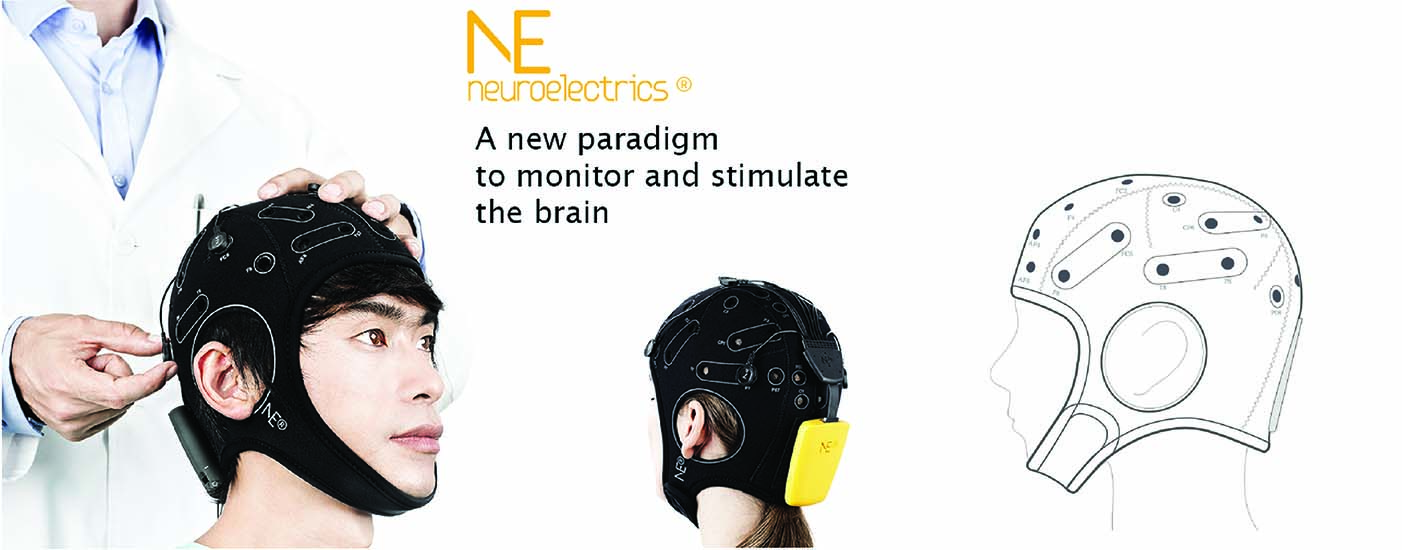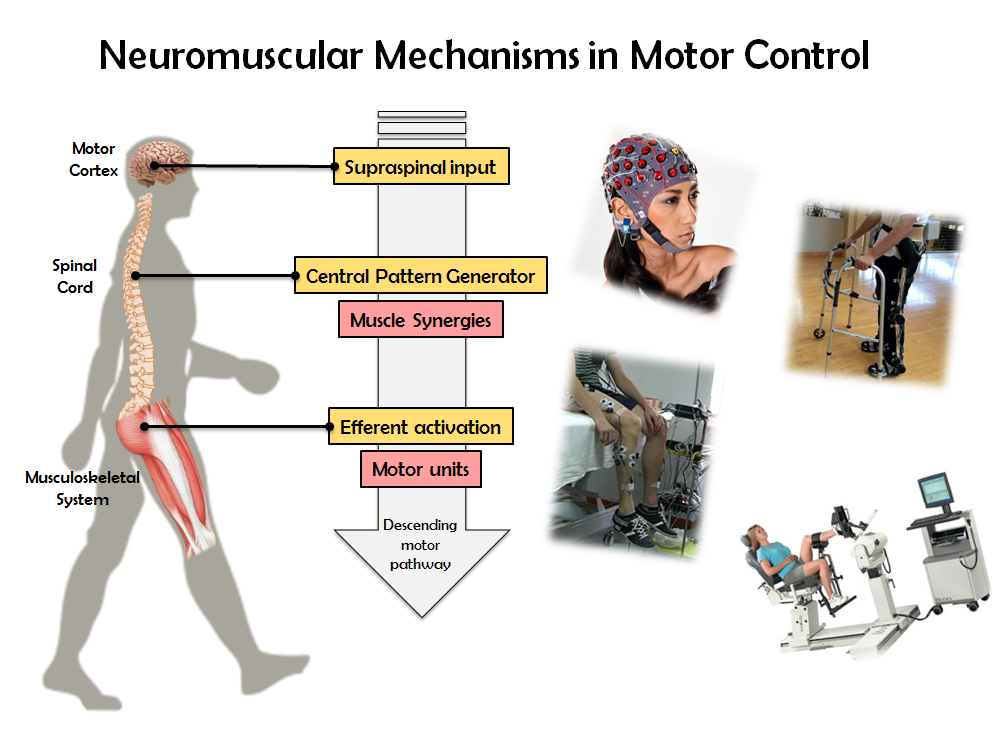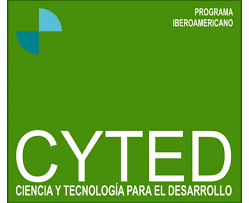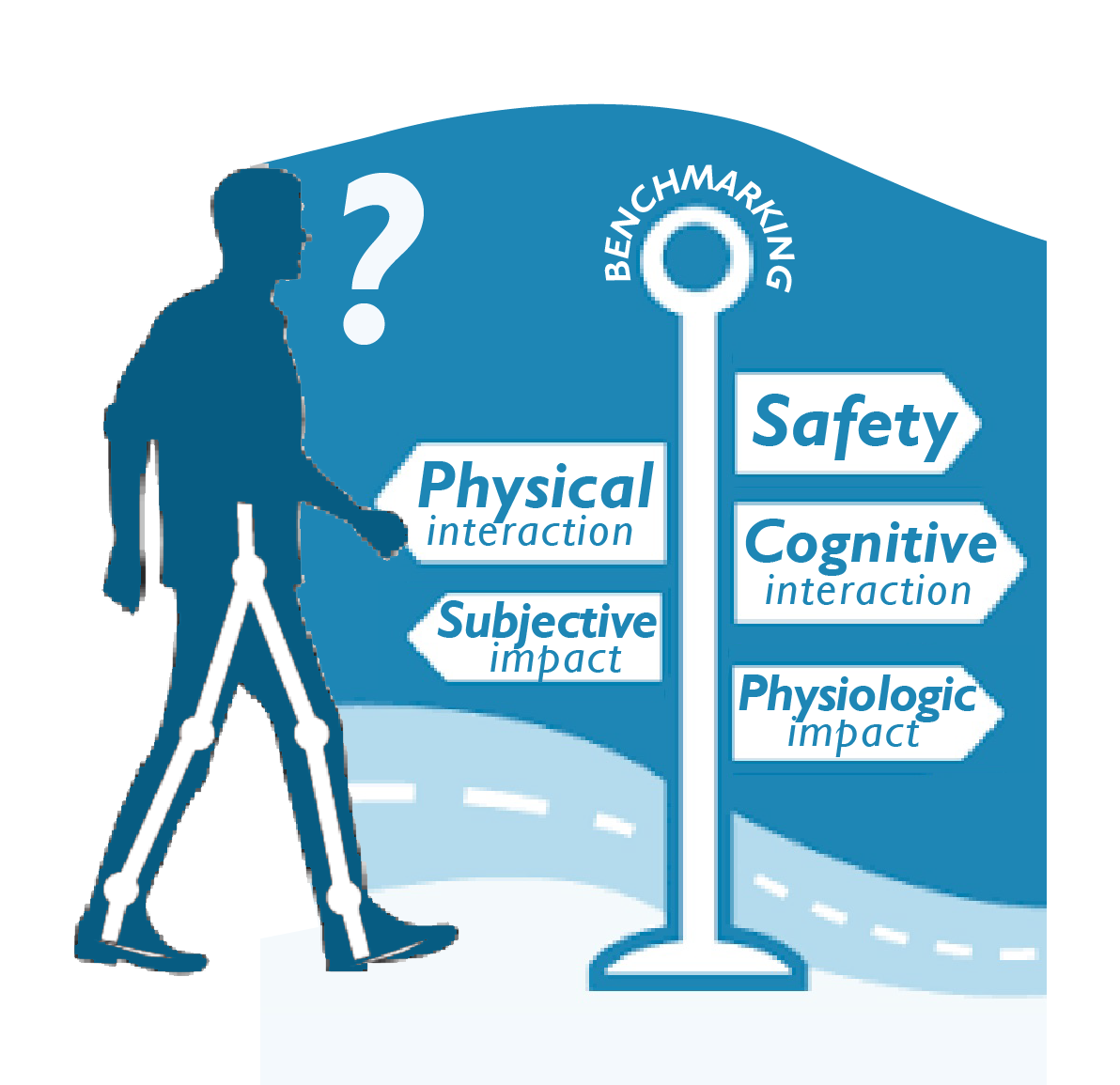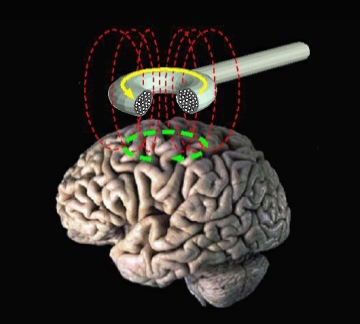
WS0. Present and future of neural stimulation techniques for neural assessment and rehabilitation
(J. Ibáñez and S. Piazza, Cajal Institute, Spanish National Research Council, Spain)Abstract:
Several methods have been proposed so far for the stimulation of neural structures, targeting the CNS (tDCS, TMS, SCS) or the PNS (Peripheral afferent nerve stimulation, cutaneous stimulation, TENS...). Improved technologies and more effective protocols are constantly being presented, pushing the limits of innovation in this field. These advances allow a better understanding of the nervous system functions and offer new methods for generating and driving CNS plasticity, with huge potential for medicine and rehabilitation. In this workshop, experts from the field will provide a general perspective of their research areas and discuss the current state of the art and future of these technologies.
Confirmed Speakers:
- J. Gómez-Soriano, National Paraplegic Hospital of Toledo, Spain
- Dr. Rafal Nowak, Neuroelectrics, USA/Spain
- A. Oliviero, Neural Repair, National Paraplegic Hospital of Toledo, Spain
- H. Kumru, Guttmann Institut, Spain
- Winnie Jensen, Department of Health Science and Technology, Aalborg University
- Ole Kæseler Andersen, Department of Health Science and Technology, Aalborg University

Grasp Task Diagram
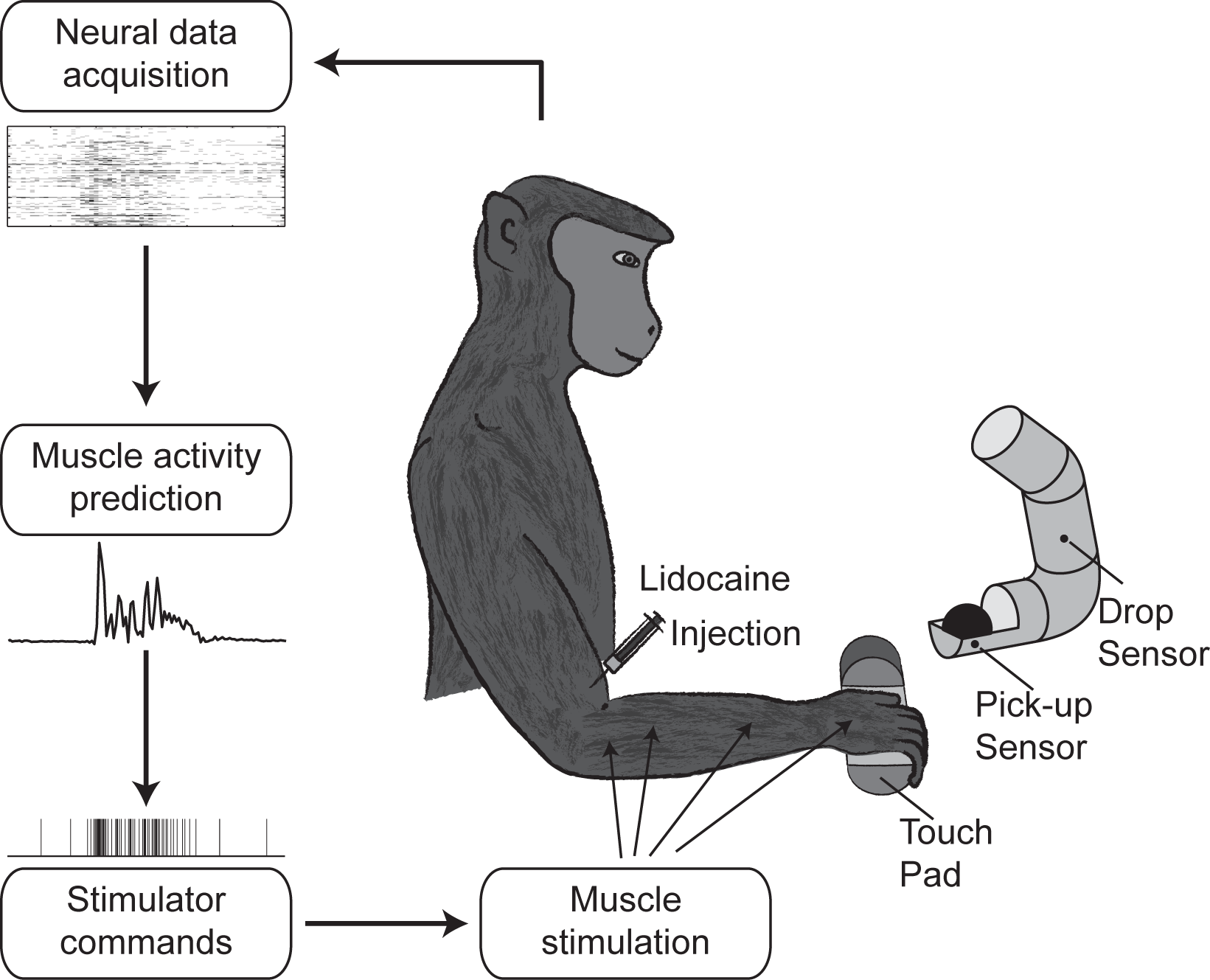
WS1. Stimulating recovering from neurological disorders using invasive neural interfaces
(Lee Miller, Northwestern University, Chicago, USA)
Abstract: Brain Machine Interfaces (BMIs) hold great promise for improving the lives of patients with motor disabilities caused by stroke or spinal cord injury (SCI). Emphasis has been placed primarily on restoration of function, including computer cursors, robotic limbs, and even electrically activated muscles controlled using signals obtained directly from the brain. However, neurological injury increases plasticity within the CNS, opening a short-lasting window for therapeutic intervention. There is mounting evidence that electrical stimulation, either centrally or in the periphery, if appropriately timed with respect to motor intent, can induce adaptive plastic changes and generate accelerated functional recovery from motor disorders. This session will examine a range of these stimulus-driven therapeutic approaches to recovery from stroke and spinal cord injury.
Program:
15:00 – 15:30: Jeff Kleim
School of Biological & Health Systems Engineering, Arizona State University
Cortical Surface Stimulation to Enhance Motor Recovery After Stroke
15:30 – 16:00: Yukio Nishimura
Department of Neuroscience Graduate School of Medicine, Kyoto University
Rewiring of a damaged neural pathway induces targeted reorganization of an extensive cortical area
16:00 – 16:30: Seth Hays
Department of Bioengineering, Jonsson School of Engineering and Computer Science,
University of Texas at Dallas
Enhancing Rehabilitation with Vagus Nerve Stimulation
16:30 – 17:00: Coffee Break
17:00 – 17:30: Lee Miller
Physiology Department, Feinberg School of Medicine, Northwestern University
Cortically-controlled FES to restore motor function following spinal cord injury
17:30 – 18:00: Tomislav Milekovic, Post-doctoral fellow with Gregoire Courtine
Center for Neuroprosthetics and Brain Mind Institute, Swiss Federal Institute of Technology
Neuroprosthetic technologies to improve motor recovery after spinal cord injury
18:00 – 18:30: General Discussion
WS2. Transcranial current stimulation (tDCS) in neurorehabilitation: from research to clinical translation
(Ana Maiques, Neuroelectrics, Spain)Abstract: In the last decade there has been a tremendous increase in tDCS research, delivering exciting prospects for clinical applications in several fields. In this session, experts in the field will discuss the state of the art of tDCS research in neurorehabiliation, with a view on the emerging clinical applications of this novel technology. During the coffee break there will be a hands on tDCS training session highlighting new technologies for multichannel tDCS, combination with EEG and home use.
Confirmed speakers: • Alvaro Pascual Leone (Director of the Berenson-Allen Center for Noninvasive Brain Stimulation at Beth Israel Deaconess Medical Center.) The state of the art of tDCS: what can we expect in the near future? • Ana Maiques (CEO, Neuroelectrics) & Rafal Nowak (PhD, Neuroelectrics)The new generation of tDCS technologies • Dylan Edwards (Director, Non-Invasive Brain Stimulation and Human Motor Control Laboratory, Burke Rehabilitation Hospital) tDCS in neurorehabilitation • Friedhelm Hummel (Defitech Chair of Clinical Neuroengineering, Brain Mind Institute, Centre of Neuroprosthetics (CNP), Swiss Federal Institute of Technology (EPFL), Campus Biotech, Geneva) Towards patient-tailored tDCS-based interventions for neurorehabilitation • Surjo Soekadar (University Hospital of Tübingen Head, Applied Neurotechnology Lab) The synergies of tDCS, BCI and neurorehabilitationWS3. Neuromuscular mechanisms in motor control
(Andrés Úbeda and Eduardo Iáñez, BMI Systems Lab, Miguel Hernández University of Elche, Spain)Abstract: Motor control is the process in which humans use their brain to activate and coordinate the muscles and limbs involved in the performance of a motor skill. The study of how this motor control is achieved has become increasingly useful in neurorehabilitation therapies where motor learning is a key factor in the recovery of motor function. This workshop provides an overview of current studies on neuromuscular mechanisms in charge of motor control and coordination showing recent advances on various aspects: from the cortical involvement during motor execution to the role of synergistic control in muscle activation.
Confirmed/Tentative Speakers:
- Jose Luis Contreras-Vidal, Brain-Machine Interface Systems Team, University of Houston, Houston (United States)
- Andrés Úbeda, Brain-Machine Interface Systems Lab, Miguel Hernández University, Elche (Spain)
- Diego Torricelli, Neural Rehabilitation Group, Instituto Cajal, CSIC, Madrid (Spain)
- Massimo Sartori, Institute of Neurorehabilitation Systems, University Medical Center, Göttingen (Germany)
WS4. Experiences and advances in technologies for rehabilitation and functional compensation in Iberoamerica, with a focus on Wearable Robotics
(Prof. José M. Azorín, Miguel Hernandez University of Elche, Spain, Coordinator CYTED-REASISTE-NETWORK, Prof. José L. Pons, Neural Rehabilitation Group, Cajal Institute, Spanish National Research Council, Prof. Eduardo Caicedo B., University of the Valley, Colombia)Abstract: In Latin America people with a neurological injury are a very disadvantaged group that has not devoted coordinated effort by clinical centres, research centres, universities and companies. This workshop is expected to be a large working forum to facilitate cooperation and exchange of knowledge among participants working in rehabilitation and assistance of persons with neurological injuries. Special attention is paid to Wearable Robotics. In the workshop the state of the art in Iberoamerica of rehabilitation and assistance of patients with neurological injuries will be revised as well as the potential clinical applications of novel technologies. Goals: Establish a broad forum working to enable and facilitate cooperation and exchange of knowledge between Latin American actors working in the field of rehabilitation and care of patients with neurological injury.
Program:
Time |
Conference |
9:40– 9:50 |
Towards a Wearable Robot for Lower Limb Rehabilitation through Human Motion Intention. |
9:50– 10:05 |
Velocity dependent spasticity detection for Active Exoskeleton based therapies. |
10:05– 10:20 |
Evaluating cognitive mechanisms during walking from EEG signals. |
10:20– 10:35 |
Effects of the use of functional electro-stimulation (FES) on the physiological cost, speed and capacity of gait after stroke. |
10:35– 10:50 |
Bioinspired Hip Exoskeleton for Enhanced Physical Interaction. Diego Casas, Marcela Gonzalez Rubio, Miguel Montoya, Wilson Sierra, Luis Rodriguez, Eduardo Rocon and Carlos A. Cifuentes |
10:50– 11:05 |
Inclusive Approach for Developing a Robotic Vehicle for Disabled Children. H. Fernández, G. Mercado, V. González and F. Brunetti. |
11:05– 11:30 |
Coffee Break |
11:30– 11:45 |
Pseudo-online Multimodal Interface Based on Movement Prediction for Lower Limbs Rehabilitation |
11:45– 12:00 |
Comprehensive Environmental Intervention for Cerebral Palsy based on the International Classification of Functioning Disability and Health. |
12:00– 12:15 |
Defining therapeutic scenarios using robots for children with Cerebral Palsy. |
12:15 – 2:30 |
An approach to Phase Model for Steady State Visually Evoked Potentials. |
12:30– 12:45 |
Serious Game for Post-Stroke Upper Limb Rehabilitation. |
12:45– 13:00 |
Wearable Robotic Walker for Gait Rehabilitation and Assistance in Patients with Cerebral Palsy. Carlos A. Cifuentes, Cristina Bayon, Sergio Lerma, Anselmo Frizera, Luis Rodriguez and Eduardo Rocon. |
13:00– 15:00 |
Lunch Break |
15:00– 15:20 |
Experiences in Development and Application of Simplified Technologies for Rehabilitation and Gait Analisys. |
15:20 – 15.40 |
Quasi-static tests on a low cost polymer optical fiber curvature sensor. |
15:40 – 16:60 |
Proposal for clinical validation of lower limb robotic exoskeleton in patients with incomplete spinal cord injury. |
16:30 – 17:00 |
Coffee Break |
10:20 – 10:40 |
IBERDISCAP 2017, Presentation. |
10:40 – 11:00 |
Tribute to Doctor Ramón Ceres. |
recoveriX_title
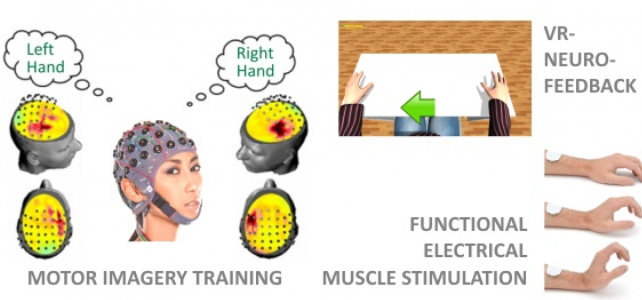
WS5. BCIs for stroke rehabilitation, for assessment of locked-in and DOC patients
(Arnau Espinosa, Guger Technologies OG)
Abstract: Lately, BCI systems become increasingly used in the context of stroke rehabilitation. Many BCI systems are based on motor imagery activity recorded from the sensorimotor cortex, which is translated into continuous control signals for rehabilitation devices.
The workshop will review current stroke rehabilitation using BCI technology and will provide insight into technology, experimental setups, results and outcomes of patient studies. Some patients diagnosed as vegetative are reclassified as (at least) minimally conscious when assessed by expert teams. A further subset of potentially communicative non-responsive patients might be undetectable through standard clinical testing. Other patients might have transient periods of relative wakefulness, but remain unaware of their surroundings. The workshop will provide an overview of BCI technology to identify non-responsive patients that might be able to communicate and use the technology as an assessment tool.
Goals: General principles of BCI for stroke rehabilitation, coma assessment and communication will be explained, so the audience will get an inside in the topic. Further participants will be able to understand the target patient group. Participants will learn about state-of-the art in BCI stroke rehabilitation, coma assessment and communication.
Half Day Workshop Schedule: Introduction to major methodological approach of BCI for stroke rehabilitation, coma assessment and communication (30 min); results of ongoing measurements (30 min); practical session with a live demonstration of stroke rehabilitation system using BCI technology (45 min); practical session with a live demonstration of an assessment system for DOC patients using BCI technology (45 min).
Profile of the participant: Clinical and engineering profile.
Knowledge that will be obtained: Participants will learn about current technology for stroke rehabilitation, coma assessment and communication will be explained. Participants will also be able to understand the target patient group. Finally, participants will learn about state-of-the art in BCI stroke rehabilitation.
Program:
9:40 to 11:10 - talk/presentation: BCIs for stroke rehabilitation, for assessment of locked-in and DOC patients (A. Espinosa)
11:30 to 13:00 - hands on session using: Recoverix, Mindbeagle, Intendix
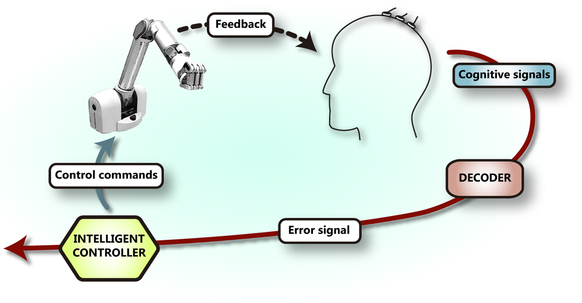
WS6. Brain-machine interface systems for motor rehabilitation
(José Carmena, University of California, Berkeley, USA and Ander Ramos, University of Tuebingen, Germany)Abstract: Brain Recently neural interfaces have ben proposed as a means for motor rehabilitation of severely paralyzed patients who cannot benefit for an alternative therapy. This workshop will report on current advances in the use of brain-machine interface (BMI) systems for motor rehabilitation. This field aims to use closed-loop BMI technology as a means of inducing functional plasticity to circumvent the lesion in the brain and facilitate functional motor recovery. The workshop will cover different aspects of BMI systems that are relevant to motor rehabilitation, including neurotechnology, experimental work in animal models, as well as human clinical trials.
Confirmed Speakers:
Introductory remarks (Ander Ramos and Jose Carmena)Prof. Thomas Stieglitz (IMTEK-Freiburg)
Development, prototyping, fabrication and testing individualized long-term safe electrode arrays
Prof. Silvestro Micera (EPFL)
Neuro-controlled artificial limbs
Prof. Leigh Hochberg (Brown)
Control signals from motor cortical activity in humans with tetraplegia
Prof. Niels Birbaumer (Tuebingen)
Brain-computer interfaces as communication devices for ALS patients
WS7. Robotic systems for training and assistance of walking
(Jan F. Veneman, Health – Rehabilitation Robotics, Tecnalia Research and Innovation; Danijela Ristić-Durrant, Institute of Automation, University of Bremen, Germany; Carlos Rodriguez Guerrero, Robotics and Multibody Mechanics group, Vrije Universiteit Brussel, Belgium; Edwin van Asseldonk, Department of biomechanical Engineering, MIRA, University of Twente, the Netherlands)Abstract:
The development of robotic devices for training and assistance of walking has been gaining intensity in recent years. This development has been driven by the expectation that robot-assisted gait rehabilitation reduces the physical load to the therapist during the training, increases the training intensity, allows a quantitative assessment of the patient’s performance and improves the patient’s walking ability.
Also, there are expected advantages outside of the rehabilitation field, such as the support of the elderly in performing activities of daily living independently at their own homes, and the support of workers in specific working conditions. This increased research and development has led to new challenges in the design and control of robotic systems for walking assistance and rehabilitation. These robotic systems are no longer simple devices to support basic movements, but rather advanced robotic systems that enable for example, training of natural walking including balance training and building synergy with motion capabilities of the human user. In this workshop, different aspects of current research and development, the challenges of the field, and limiting factors in innovative robotic solutions for walking rehabilitation and assistance will be discussed.
The presentations will highlight the issues related to the design and control of innovative robotic systems around the following topics:
- Human cooperative control strategies in robotic systems for training and assistance of walking
- Training and assistance of natural-like walking including balance (training protocols and development of control strategies)
- Actuator designs for human cooperative behaviour in robotic systems for training and assistance of walking
- New conceptual approaches in robotic systems for training and assistance of walking
Goals:
This workshop aims at bringing together researchers from the robotics field of walking rehabilitation and assistance, experts in clinical movement analysis and rehabilitation, biomechanics and human motor control to discuss different aspects of current research and development, the challenges of the field, and limiting factors in innovative robotic solutions for walking rehabilitation and assistance. The organizers explicitly aim to encourage discussion among senior and junior researchers, on these topics.
As continuity of the successful previous edition of this workshop held at ICORR 2015, the organizers selected leading speakers in the fields related to the design and applications of lower-limb robotic systems for rehabilitation and assistance, from physiology to safety and control.
Confirmed Speakers:
- Nicola Vitiello (Scuola Superiore Sant’Anna)
- Zlatko Matjačić (University Rehabilitation Institute Ljubljana)
- Yu Haoyong (National University of Singapore)
- Thomas Sugar (Arizona State University)
- Dirk Lefeber (Vrije Universiteit Brussel)
- Conor Walsh (Harvard University)
Beside the invited speakers, two organizers will give presentations:
- Edwin van Asseldonk
- Danijela Ristić-Durrant
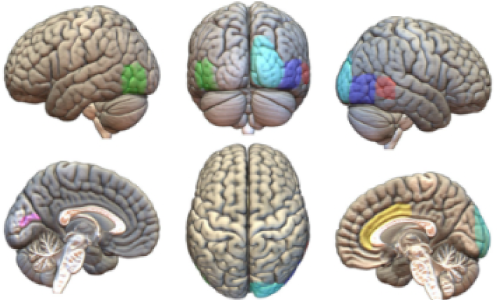
WS8. Advanced acquisition and processing of electrophysiological activity in the central and peripheral nervous systems
(J. Ibáñez and J. E. González-Vargas, Cajal Institute, Spanish National Research Council, Spain)Abstract:
During the past years, significant advances have been made in the development of technological solutions that allow incredibly precise means of recording and characterising the activity in the CNS and PNS. The suitability of these different solutions for diagnostic and therapeutic applications has to be precisely considered in many different lines within the neurorehabilitation field. This workshop will give a highly technical overview the current research lines involving techniques such as LFPs, multi-channel, high-density neural recordings, EEG, high-density EMG and MEG. Speakers will highlight the main opportunities and technological challenges related to the acquisition and processing of these high-dimensional recordings.
Confirmed Speakers:
- Óscar Herreras, Instituto Cajal, Spanish National Research Council
- Jose Carmena, University of California, Berkeley, USA
- Pablo Cuesta, Centro de Tecnologías Biomédicas, Universidad Politécnica de Madrid, Spain
- Ales Holobar, University of Maribor, Slovenia
- Maria V. Sanchez-Vives, ICREA Research Professor at Institut d'Investigacions Biomèdiques August Pi i Sunyer (IDIBAPS).
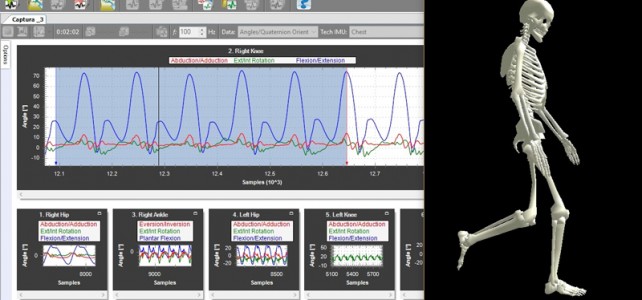
WS9. Inertial technology for Biomechanical Assessment, breaking paradigms.
(Centro Superior de Estudios Universitarios LaSalle and Technaid S.L)Abstract:
It is well known the motion capture systems based on cameras (photogrammetric technics) are reference in the biomechanical analysis field, despite its limitations and disadvantages, such as high computational costs, high start-up time or low portability. The cutting-edge inertial technology is showing excellent capabilities to become a revolutionary new reference in this field with several advantages.
Organized by Centro Superior de Estudios Universitarios LaSalle and the company Technaid S.L., this workshop is framed as a hands-on experience where the attenders will immerse in using the Tech-MCS, the inertial motion capture system developed by Technaid and designed for biomechanical analysis.
Thus, starting with the basics of this technology through some research studies, it will be evident how the versatility, portability and reliability of the inertial technology increase its potential to be applied in different areas of human biomechanics assessment.
1. Introduction to Inertial Technology.A brief introduction to Inertial Technology fundaments will underlie the lecture about Inertial Motion Capture Systems applied to human biomechanics, as an objective measurement tool. During the lecture we will go in depth in the extent of these systems stocktaking the advantages and disadvantages in their application on biomechanics.
2. Presentation of Inertial Technology Reliability Validation Studies.We will introduce the different Validation Studies carried out at the LaSalle’s Biomechanics Laboratory. The most relevant study is about the comparison between Inertial Technology based Motion Capture System and current market referents as Optoelectronic Motion Capture Systems. Several data will be explained about the Inertial System validity during the evaluation of human biomechanics in different motion planes.
3. Movement Valuation During Musculoskeletal Pain. Pathologic Gait Study.Experimentation will be prioritized. Attendees will have the opportunity to implement their recent knowledge about Inertial Motion Capture Systems by means of different exercises selected to strengthen the use of this technology with an easy and efficient approach, obtaining quick results. 3D angular measurements will be obtained in different human joints, as well as different Pathologic Gait Analysis will be carried out. In addition, attendees will have the opportunity to set out and solve any specific need about their studies in movement analysis.
4. Implementation in Neuro-Rehabilitation.Central nervous system disorders usually come up with different motor disorders. In neuro-rehabilitation area, the improvement on the joints’ motor control could be assisted by inertial systems in order to increase the cognitive impact of the movement, as well as to apply sensitive feedback techniques.
Physiotherapeutic procedures examples, for motor-control improvement, applying inertial technology will be introduced too.
WS10. The impact of technology on embodiment. Wearable Robots and Body representation
(M. Molinari and I. Pisotta)Abstract:
Our brain is very adaptive, and can map relevant artificial tools as an extension of the physical body. The relationship between the body and the external object is special when wearing tools. This is more true in patients with a reduction or loss of sensorimotor information due to injury and the use of wearable devices may influence recovery by interacting with the residual body capacities interfacing, directly or indirectly, with an altered sensorimotor systems.
In the present workshop, we will focus on the neurobiological mechanisms of embodiment and how specificities of wearable robotic devices may influences body schema changes as well as devices usage and improve functionality. To induce changes on body perception has critical ethical issues, which will be also addressed.
Speakers:- Marco Molinari. Introduction. 10 min - Marco Molinari. “The neurobiology of embodiment in health and disease” 20+10 minutes.
- Pisotta Iolanda. “To wear VS to use devices for motion assistance: Agency affect body representation” 20+10 minutes.
- Dario Farina. “Robotic devices in amputees and body representation” 20+10 minutes.
- Étienne Burdet. “To wear haptic devices for body representation changes” 20+10 minutes.
- Pim Haselager. “Wearables, agency and responsibility: On the ethics of wearable robotics” 20+10 minutes.
- Round Table: general discussion
CANCELLED
WS11. Rehabilitation tomorrow: the role of advanced technologies
(T. Keller, IISART)Abstract:
Speakers:- Dr. Federico Posteraro (Director of Rehabilitation Department of AUSL 12 Viareggio). “Technologies in Rehabilitation - What do we know from basic research?”
- Dr. Ursula Costa (Clinical Applications Manager, Hocoma AG). “A perspective from practice - Why should technologies complement modern rehabilitation?”
- Dr. Thierry Keller (Head Rehabilitation Department at Tecnalia). “What do we expect in future rehabilitation?”
- Expert panel: question & answer with the experts, (20 minutes) - Round Table: general discussion
WS12. Towards a roadmap for Benchmarking in Wearable Robotics
(D. Torricelli, CSIC; J. Veneman, Tecnalia; and J. González, CSIC)Abstract:
The availability of standardized metrics and protocols to evaluate the effectiveness of wearable robotics technology is a crucial step in the research-to-market process. What “good” means in wearable robotics is still an open question, which involves multiple perspectives at technical, clinical and usability levels.
This workshop is to promote a face-to-face discussion between engineers, clinicians and users in identifying the most promising directions in this field. The workshop will result in a draft version of a “roadmap for benchmarking”, which can be used by the community to guide future research and collaborative actions.
This workshop is a follow-up of previous workshops at WeRob2014, ICORR 2015, and WeRob2016. The workshop is supported by the recently created network on benchmarking, and by the European Projects Biomot and BALANCE.
Discussion:In the first part of the workshop, the attendees will be divided in small discussion groups focused on the following features:
• Benchmarking physical and cognitive interaction between robot and user
• Benchmarking physiological and subjective impact of robotic therapy
• Benchmarking performance of industrial wearable robots
• Benchmarking safety
The discussion should result in concrete proposals on the following aspects*:
• Identifying the target motor functions (e.g. walking, reaching, grasping, etc…)
• Identifying the variables to be measured (e.g. interaction force, kinematics, etc…)
• Designing protocols for experimentation on real systems
• Identifying barriers and solutions for the replicability of protocols
In the second part of the workshop, each group will briefly report about the most relevant points discussed, in order trigger a more general discussion with the audience. Throughout the workshop, organizers will collect the main conclusion, and draft a first version of the roadmap, that will be made available to the attendees interested in receiving it.
*The groups will be supported with material to favor interactive and creative discussion (Post-it, markers, flip charts, published papers, etc…).
WS13. The IEEE Brain Initiative Workshop on Advanced NeuroTechnologies for NeuroRehabilitation
(M. Akay, University of Houston; J. Pons, CSIC)
Abstract:
The workshop will highlight recent technological advances by focusing on advanced technologies that monitor and control brain activities to treat neurological diseases, including Alzheimer's, Epilepsy, Depression, etc., from the molecular to systemic levels.
Invited Speakers:
SIlvestro Micera (3.00-3.30 pm)
Ted Berger (3:30-400.pm)
Jose L. Pons (4.00-4.30)
Erik Perreault (5.00-5.30 pm)
Dario Farina (5.30-6.00 pm)
Winnie Jensen (6.00-6.30 pm)

